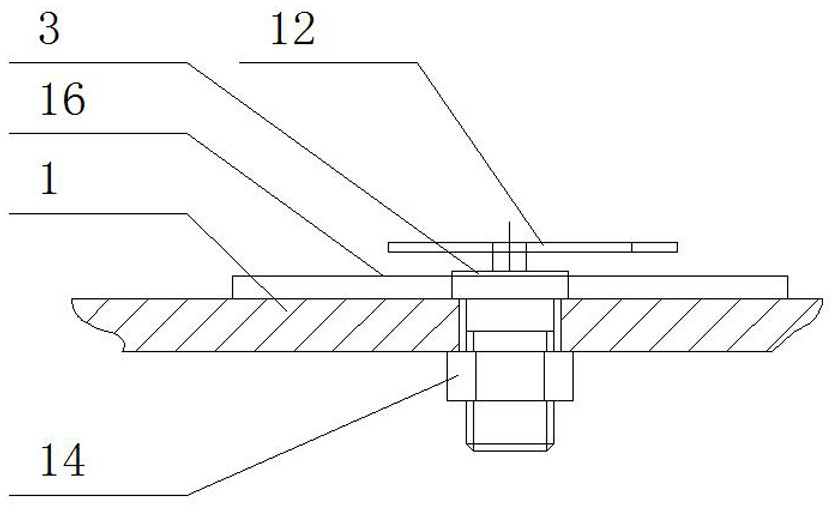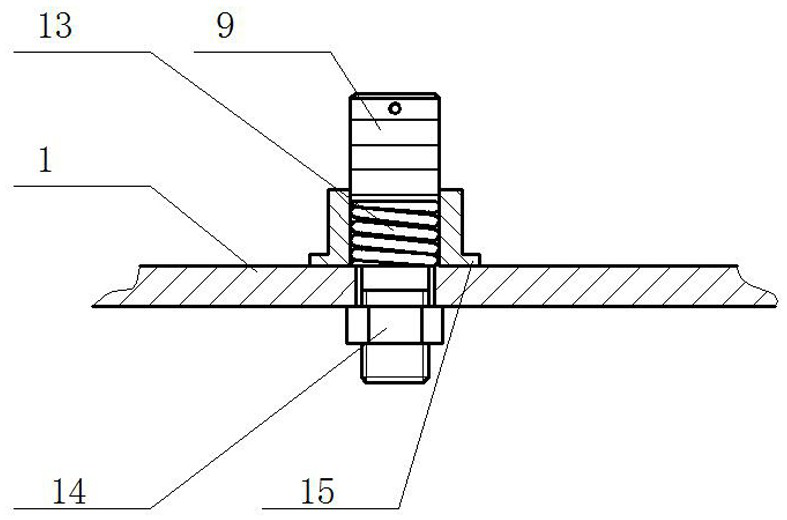Teaching aid for composition teaching
A technique for composition and teaching aids, applied in educational aids, teaching aids, instruments, etc., to solve problems such as time-consuming and unspecified word counts
- Summary
- Abstract
- Description
- Claims
- Application Information
AI Technical Summary
Problems solved by technology
Method used
Image
Examples
Embodiment Construction
[0034]In order to make the object, technical solution and advantages of the present invention clearer, the present invention will be further described in detail below in conjunction with the accompanying drawings and embodiments. It should be understood that the specific embodiments described here are only used to explain the practice of the present invention, and are not intended to limit the present invention.
[0035] The invention as figure 1 Shown:
[0036] Such as figure 1 As shown, a teaching aid for composition teaching includes a matrix plate 1, a rotating disk 5 2, a rotating shaft 3, a rotating disk 3 4, a rotating disk 5, a fixed module 6, a rotating disk 4 7, a rotating disk 2 8, a telescopic rod 9, and a color line 10; The matrix board corresponds to the composition as a whole, and is divided into five regional modules from top to bottom according to the composition structure: topic area 101, functional area 102, beginning area 103, main body area 104 and endin...
PUM
 Login to View More
Login to View More Abstract
Description
Claims
Application Information
 Login to View More
Login to View More - R&D
- Intellectual Property
- Life Sciences
- Materials
- Tech Scout
- Unparalleled Data Quality
- Higher Quality Content
- 60% Fewer Hallucinations
Browse by: Latest US Patents, China's latest patents, Technical Efficacy Thesaurus, Application Domain, Technology Topic, Popular Technical Reports.
© 2025 PatSnap. All rights reserved.Legal|Privacy policy|Modern Slavery Act Transparency Statement|Sitemap|About US| Contact US: help@patsnap.com



